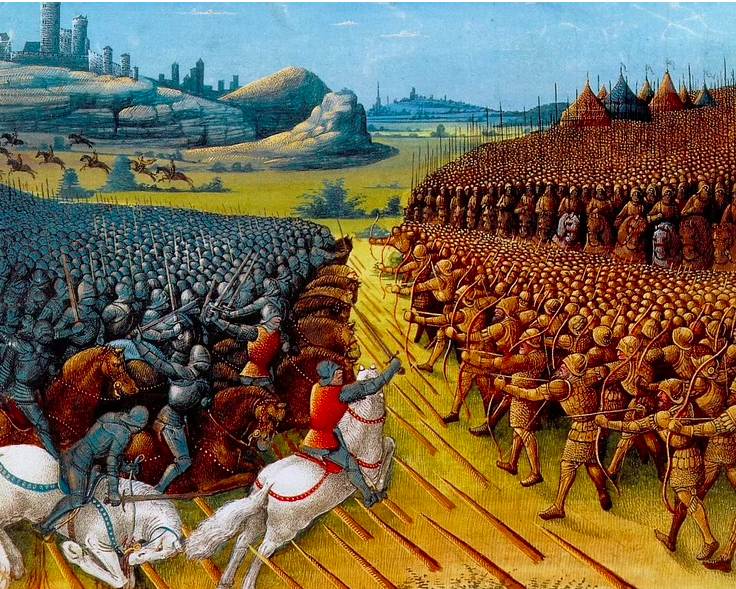25.9. 1396 Battle of Nikopol
Categories: Years of war and revolution , Calendar

In the Battle of Nikopol in September 1396, the Ottoman Turks clashed with the Crusader army. Sigismund also intervened in the battle and had to escape by fleeing down the Danube to the Black Sea, from where he reached Constantinople and then took a detour home before Dubrovnik.
Sultan Bayezid, Murad's successor as Ottoman ruler, was an energetic warrior called "The Lightning" who besieged Constantinople itself. Fearing that his country would be the next target of Bayezid's army, King Sigismund of Hungary called on the French court to crusade against the Turks.
When France and England reached peace, there were many knights eager for an opportunity to prove their valor. Count de Nevers, son of the Duke of Burgundy, set out for Hungary with other nobles and 8,000 men. There they met Sigismund's army and together they advanced down the Danube River into Ottoman-controlled Bulgaria.
A force of Johannite knights sailed down the Rhone to join the expedition. The Christians besieged the Turkish fortress of Nikipolis, believing Bayezid to be far enough away. However, the Sultan hurried a sharp march north and took up a position only a few miles in front of Nikopol.
The French knights did not heed Sigismund's calls for caution and insisted on opening the battle by attack. Many of them were knocked from their saddles by sharp stakes driven into the ground in the direction of the attack or by arrow fire, but they continued valiantly to fight on foot until they were surrounded by Ottoman sipahis.
Thereafter Sigismund entered the voyage with reserve troops, but witnessed the victory of the enemy when the Bayezd's Serbian allies led by Stefan Lazarevic launched a cavalry charge that forced the Christian knights to flee. Few escaped on foot or by sea. About three thousand knights were captured and most of them stayed the following day.
"Each warrior was ordered to kill his own prisoner, and instead of those who were unwilling...King Bajezid appointed other men," said Johann Schiltberger, then 17, who was spared because of his age.
Sigismund himself had to save himself by fleeing down the Danube to the Black Sea, from where he reached Constantinople and then took a detour home before Dubrovnik. With the fall of Nicopolis, Ivan Stracimire's dominion ended and Bulgaria's independence was definitively ended.
"Several attempts to stop the Turkish advance were also made in the 15th century. For example, the New Crusade falling in the 1940s is worth remembering. It was led by Vladislav III. Jagiellonian, who had also ruled in Hungary since 1440. Another leader of the campaign was the Duke of Transylvania, John Hunyady (Korvín). The beginning of the expedition looked promising until winter struck," writes Jan Rychlík in Between Vienna and Constantinople: The Making of the Balkan Nations.
Sources.
The article is included in categories: